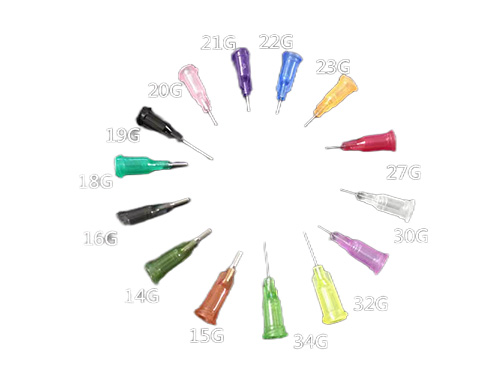Automatic Seeding Machines: Smart Cultivation Pioneering New Trends in Planting
2025-03-31 00:51:17
In the booming development of modern agriculture, the sowing process stands as the critical starting point of a crop's life cycle. Precise and efficient sowing not only ensures robust crop growth but also lays the foundation for a bountiful harvest. The emergence of automatic seeding machines has been a timely innovation, revolutionizing the planting industry with its intelligent features and gradually leading the sector into a new era of progress. Let's delve into the fascinating world of automatic seeding machines.
I. Basic Understanding of Automatic Seeding Machines
1.Definition and Appearance
An automatic seeding machine is a highly automated mechanical device designed to complete seed sowing, coverage, and preliminary seedling preparation tasks with preset programs. Its appearance varies to suit different planting environments and needs. Common models feature a large seed storage bin for continuous seed supply, equipped with a precision seed metering device—a core component enabling accurate sowing. Advanced sensors and control systems are often integrated for intelligent operations. Their industrial color schemes, such as blue or orange, highlight technological aesthetics and enhance visibility in fields.
2.Material Types
·Metallic Materials: Dominate the machine's structure, with high-strength steel frameworks ensuring stability and durability. Metal components resist external forces in rugged field conditions, maintaining structural integrity and operational reliability. Wear-resistant metal metering parts sustain precision over time, minimizing errors and extending lifespan.
·Plastic Materials: Lightweight, cost-effective plastic bins facilitate transportation and installation while resisting corrosion from chemicals like pesticides or fertilizers.
·Composite Materials: Emerging applications combine fiber-reinforced plastics or metals to create lightweight yet robust components (e.g., seeding arms, drive shafts). These materials reduce energy consumption, improve efficiency, and offer insulation and fatigue resistance.
II. Detailed Classification of Automatic Seeding Machines
1.Compact Desktop Automatic Seeding Machines
·Structural Features: Small, portable design with modest seed bins suitable for home gardeners or small nurseries. Precision metering via motor-driven wheels or scoops enables adjustable seed spacing and depth. Simple control panels allow parameter settings.
·Applications: Ideal for balcony/garden flower/vegetable sowing. User-friendly for novices, adaptable for niche seedling needs in small nurseries.
2.Large-Scale Agricultural Automatic Seeding Machines
·Structural Features: Heavy-duty, complex systems with massive seed bins and high-precision pneumatic/mechanical metering. Advanced sensors and controls enable high-speed, accurate sowing. Integrated furrowing and soil covering mechanisms work with tractor power for large-area operations.
·Applications: Suited for grain crops (corn, wheat, soybeans) in vast fields. Ensures uniformity, shortens cycles, and boosts productivity.
III. Applications Across Diverse Scenarios
1.Home Gardening
·Efficient Sowing: Automates seed placement in trays, saving time and ensuring consistency. Beginner-friendly for flowers/vegetables in home gardens.
·Advantages: Compact size, easy storage, and high precision optimize seed spacing for germination rates and seedling quality.
2.Professional Agriculture
·Efficiency and Quality: Rapid large-area sowing with precise depth/spacing control. Enhances crop uniformity and yield potential (e.g., maize).
·Synergy with Other Processes: Integrates with tillage, fertilization, and irrigation systems to streamline workflows, reduce costs, and improve economic efficiency.
3.Nursery Operations
·High-Volume Seeding: Meets large-scale nursery demands with rapid, precise tray sowing. Ensures optimal seed spacing for germination and seedling health.
·Integrated Systems: Collaborates with trays, irrigation, and greenhouses to create a cohesive seedling production system, reducing labor and enhancing competitiveness.
IV. Advantages of Automatic Seeding Machines
1.Enhanced Efficiency
·Rapid, Precise Metering: Advanced technology reduces sowing time significantly. Large-scale machines cover vast areas daily.
·Automated Batch Operations: Minimizes labor costs and human error variability.
2.Improved Germination Rates
·Optimal Growth Conditions: Precise depth/spacing ensures adequate water, nutrients, and oxygen. Uniform distribution maximizes land use.
·Soil Aeration and Moisture: Furrowing/covering improves soil structure, promoting seed respiration and germination.
3.Management and Transplantation Convenience
·Orderly Sowing Patterns: Facilitates monitoring and pest/disease detection. Streamlines weeding/fertilization tasks.
·Reduced Transplant Shock: Uniform root systems ease seedling extraction, minimizing damage and boosting transplant survival.
V. Purchasing Considerations
1.Size and Type Based on Needs
·Scale: Compact models for home use; large-scale machines for agriculture.
·Seed Type: Mechanical meters for large seeds (corn, soybeans); pneumatic for small/irregular seeds (vegetables, flowers). Consider no-till options for soil conservation.
2.Material Quality Assessment
·Durability: Metal components must withstand wear; plastics should resist corrosion. Composites need strength and stability.
·Eco-Friendliness: Prioritize recyclable/biodegradable materials and energy-efficient designs.
3.Brand and Price Balance
·Brand Reputation: Established brands offer quality and after-sales support.
·Cost-Effectiveness: Avoid overly cheap or premium models; seek value for money. Negotiate bulk discounts for large purchases.
VI. Market Trends and Future Outlook
1.Industry Status
The automatic seeding machine market is expanding with diverse product types, production regions, and sales channels (including e-commerce).
2.Technological Innovations
·New Materials: R&D focuses on stronger, lighter, eco-friendly materials with antimicrobial properties.
·Intelligence Upgrades: Sensors for real-time soil data adjustments, smart monitoring systems, and IoT integration.
3.Impact on Future Agriculture
·Efficiency and Quality Gains: Precision and smart adjustments elevate crop yields and management.
·Sustainability: Eco-friendly materials and energy savings align with green agriculture trends.
·Diversified Demand: Innovations cater to both large-scale farms and home gardening, fostering industry diversification.
VII. Conclusion
Automatic seeding machines, with their intelligence and efficiency, are becoming vital tools in modern agriculture. Understanding their types, advantages, purchasing tips, and market trends empowers growers to make informed choices. As technology advances, these machines will continue to drive agricultural progress, leading the industry toward smarter, more sustainable futures.

It adopts electrical integration and can be started by pressing the fully automatic button ...

The XP750 seeder has stable performance, excellent product quality, simple and convenient o...

It adopts electrical integration and can be started by pressing the fully automatic button ...

Needle list Seed nozzle model Different models Sowing types are different...



